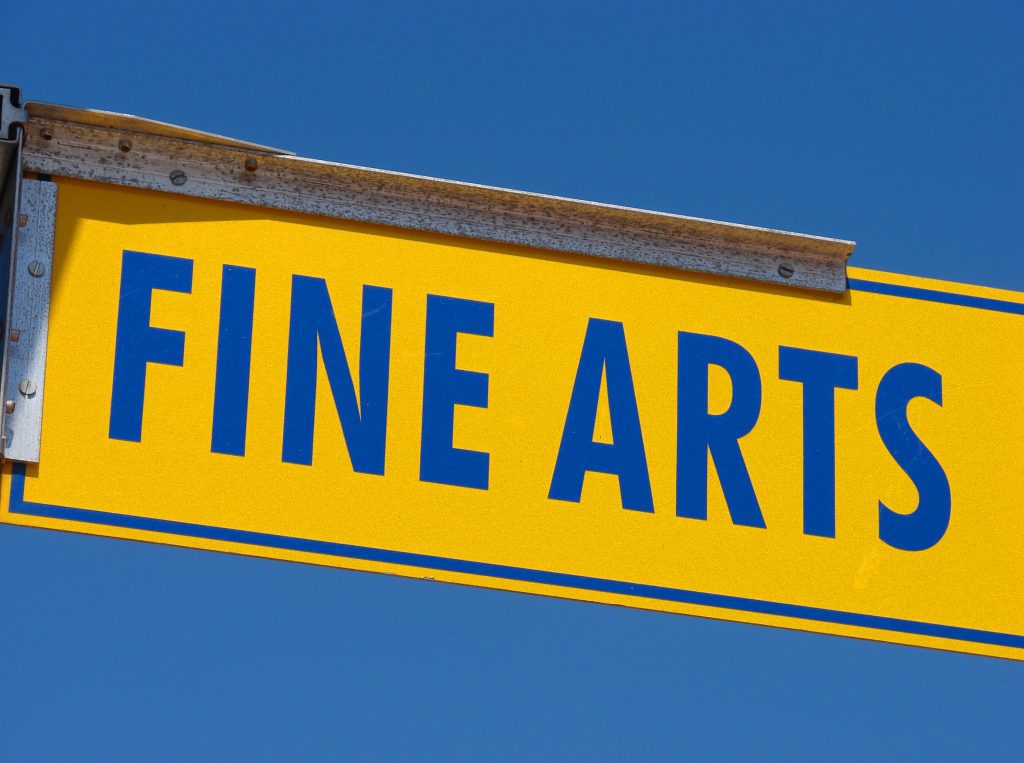
There used to be a time when an arts degree wasn’t the ideal course to pursue for a college or university degree. The default understanding is that an arts degree holder would end up as a ‘starving artist’ of sorts, as the initial perception limits the understanding to be geared toward being a visual artist practicing solely for artistic purposes—and commercial success lags far behind.
However, this degree now covers so much that anyone pursuing it could use it as the first step toward garnering a viable career footing in multiple industries. If you’re thinking of pursuing this degree, you could end up working with a firm or as a solo entrepreneur running your artistic enterprise.
Possible Career Tracks For Arts Majors
By taking an arts degree course, you will have covered the fundamental design principles, so you can fine-tune your knowledge to fit into whatever career you desire. Your tertiary education would have prepared you enough for such basics to pursue specializations as you develop your career.
To demonstrate, here are some possible career tracks you can follow with an arts degree.

1. Interior Designers
Having a fine arts degree will help you cultivate skills to excel as an interior decorator since you can take subjects that specialize in this field. If you have an eye for color, harmony, and good lighting, this could be an option for you.
Interior designers combine function, security, style, and beauty to create a pleasant interior space. However, a decorator’s job isn’t just about making interiors aesthetically pleasing; it’s also about improving functionality and security. Thus, you’ll be trained to do diverse sketches and design techniques. As a result, many interior designers end up specializing in specific structures, rooms, or styles to change the space using colors, fabrics, furniture, floors, walls, lighting, finished items, and other elements in public and private areas.
Interior designers usually design sketches by hand or use special software, then share their vision with architects and builders. They have a hand in selecting materials and furniture to make sure the construction meets client requirements. They also oversee all aspects of the project to ensure time efficiency, budget restraints, and proper installations. Thus, interior designers also work with contractors and structural engineers to ensure the space adheres to design specifications, building codes, and inspection regulations.
2. Art Director
Art director jobs usually require a minimum of having an undergraduate degree in fine arts, film, or photography, or related artistic and creative disciplines. The basic work consists of coming up with new ideas for creative execution and working with teams to bring those ideas to life. So, if you enjoy studying about mixing media for more commercial purposes and love working with groups, you might find it interesting to follow an art director’s career path.
An art director is a top-level executive who starts in their chosen field by creating layouts, artwork, graphics, and the visual styling needs of media-oriented productions. In the publishing world, seasoned art directors elevate from this basic status and oversee various stages of planning the content layout, photo design, advertising, and elements of print and online magazines, newspapers, and websites.
In the advertising and film world, an art director could oversee the packaging design aspects of brand products or the execution of a film or television set production. They’re responsible for visualizing the script of any production, whether it be of a modern setting or a period piece.
Regardless of the industry, an art director will need to work with marketing and communications professionals to achieve their work duties and responsibilities. For many, it’s a fulfilling career prospect since, with an arts degree, a professional portfolio, additional skills learned on the job, and a few years of experience under one’s belt, their typical income could range from an average of USD$43,000 to USD$164,000 per annum.
3. Fashion Illustrator
Are you an artistic person interested in fashion? Are you intrigued by the world of clothing design and couture pictures? Have you ever dreamed of working with exceptional and famous fashion designers to make unique yet breathtaking clothes come to life? If your answer to these questions is yes, then a fashion illustrator career could be suitable for you. Pursuing an arts degree could enhance your eye for details and understanding of diverse artistic trends that govern the fashion industry.
A fashion illustrator is often assigned to develop interesting images that aim to increase public interest in purchases of certain clothing lines. These images or illustrations are usually integrated into various advertising platforms in print, television, and online venues. In addition, illustrators act as a graphic designer who assumes multiple responsibilities, including making sketches, layouts, or images that help bring clothes to life.
Thus, you’ll get the opportunity to work with top-ranking fashion designers and tailors if you showcase yourself as exceptional. You can find yourself making bespoke wedding couture, designing for a major clothing line, or even working with artisans for style accessories, such as shoes, bags, and jewelry. In general, a professional fashion illustrator works very closely with fashion designers and artists to produce unique and creative images with traditional and digital media.
However, to become a fashion designer, your art degree might not be enough. You’d most likely need to enroll at a fashion school to learn more about fashion-focused designing. If you’re someone who loves shopping for clothes and looking at the latest trends, plus a hardworking person who wants a fast-paced work environment to boot, you’ll be delighted to work as a fashion illustrator.
4. Animator or Multimedia Artist
Animators are the artists tasked with developing, manufacturing, and producing static or animated images used in video games, websites, and films or TV shows. Animators are adept in using various animation-designed software and creating drawings by hand to render in a two-dimensional or even three-dimensional space. They’re often tasked with storyboard creation, model designs, and building characters. Animators could also do advertising work for use on the internet to attract and direct visitors online to websites.
If you like special effects, video games, digital illustrations, and other creative media forms, becoming an animator could be a way for you to use your art degree. Every project would be fun and unique, so you’ll always enjoy a good time while working. Imagine working on music videos for top celebrities or even creating animated movies for top-notch entertainment companies. Doesn’t that sound exciting? In this field, you’ll find yourself immersed in a world full of talented professionals, such as designers, tech developers, copywriters, product managers, and more. You’ll also be at the forefront of technology.
The qualification requirements for entry-level animators usually include a degree in arts, computer science or programming, or any related interdisciplinary field. Furthermore, most employers require other credentials, like having a strong working experience with a creative portfolio backup and technical skills know-how. An animator’s average income ranges from USD$45,750 to USD$82,860 every year, although it could be more or less based on diverse factors. Usually, you’ll need to be good at working in teams and know relevant animation coding and software to make waves as an animator.
5. Graphic Designer
A graphic designer is a visuals creator who could work in the public sector as well as the private sector. They work on logos, illustrations, visual concepts, fonts, and other elements, combining everything smoothly into a coherent brand identity for their clients. They analyze their clients’ needs and requests, then design such visual images and create illustrations, text, animation, and materials used for numerous promotional outlets.
Graphic designers could combine skills in using hand-rendered artworks as well as computer-aided design to produce a multitude of images useful for print or digital publications. They work with varied professionals as well, such as ad and promo departments, PR practitioners, marketing account managers, and other creative team members.
An aspiring graphic designer often starts working on entry-level position jobs after completing an arts-related bachelor’s degree program. The average annual salary of this position is USD$34,000 to USD$60,000 every year, but this also varies from job role to job role. But aside from holding a regular job, you could also freelance on the side to boost your income.
Students who are more visual-minded can use their creativity and encoding skills obtained from their degrees to become an efficient graphic designer. If you’re an art degree holder with a good eye for design and a comprehensive understanding of marketing principles, this might be one of the best jobs for you.
6. Art Gallery Curator
A degree in the arts can lead to a number of career options, including being a curator. Many galleries would benefit from a well-versed curator, as these professionals help exhibit the artwork and interpret its meaning in terms of what the visitors can understand. As an art gallery curator, you have the unique position of being responsible for preserving and promoting art exhibitions.
It’s also your job as a curator to coordinate the various programs the gallery is involved in, from setting up artists’ work in an exhibition to running a program of related events. Thus, you need to keep track of all the events the gallery is planning and conducting, from shows to conferences and seminars. In addition, curators often take on the additional task of being event planners, ensuring that every aspect of the work they display is coordinated to make the most of their space and budget. Thus, they have to be accessible to their clients, answer phones and emails, and make themselves available for their clients’ meetings.
Curators are also vital when working in a museum with wings or sections that feature artworks. They are also regarded as celebrities if they’re good at curating artworks in large-scale major arts-focused museums. Often, artists have varying works that may not have an apparent unified theme. It is the curator’s job to flesh out these themes and present them in a palatable way to the audience. If you’re someone who loved arts enough to study it in college—especially if your focus is on art history and art movements—you can break into the museum art gallery curator’s field and show off your passion.
7. Arts Therapy
Studying the arts these days is a good stepping stone for working in multidisciplinary fields that don’t necessarily focus solely on creative works. With your arts degree—as well as a further certification in either counseling or therapy—you can become an art therapist today.
Art therapists use diverse art forms to help individuals with emotional or mental problems. In addition, they also provide coaching and consulting services for individuals. Thus, a degree in art therapy will include classes on cognitive-behavioral therapy, counseling, developmental disabilities, holistic counseling, art history, creative writing, graphic design, music therapy, theater studies, visual arts, and performing arts. Obtaining a master’s degree in a connected field could also provide further instruction in the areas mentioned and may also include courses in professional leadership, social work, and advanced forms of counseling.
Combining the lessons of this academic background, an art therapist’s primary job is to enhance and balance a person’s mental, physical, and emotional states through the use of therapeutic arts. These professionals also guide their clients on the ways to deal with such issues or problems. Depending on the situation that needs to be addressed, they will suggest the appropriate activities for improving or healing a client. They offer information about creative works, meditation, yoga, relaxation, nutritional and lifestyle counseling, and other such techniques, which help address the mental and physical aspects of anxiety.
There is an increasing demand for licensed creative arts therapists today. Some of them even teach their own art classes independent of an institution. Since people from all walks of life seek their help, the demand continues to rise for this kind of therapist. So, if you are a people person and good at listening or discussing issues with individuals, you can combine these skills with your arts degree and become an art therapist.
Conclusion
The beauty of an arts degree is the flexibility and diverse opportunities that come with it. Many artistic students opt to pursue this path, whether they already have a specific career in mind, because they know the opportunities are broad with an arts degree. Thus, those who previously didn’t believe that an arts degree could be utilized in many industries are now being proven wrong. Art can go beyond a canvas or a palette now, and many industries can use an arts degree holder in varied professional ways.



